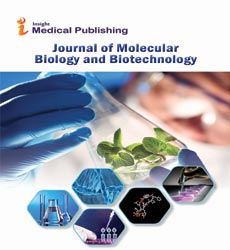Investigation of Different Agro-Industrial Wastes as Bio-Economical Substrates to Produce Fungal Laccase
Abstract
Lignocellulosic biomass is made up of three main fractions: cellulose and hemicellulose and lignin. It is considered mainly as waste, but chiefly, as the most abundant renewable carbon source on the planet. Therefore, recently it has received a lot of attention as a potential source of bioenergy and bio-based chemicals. The objective of this study is to develop a valorization white biotechnology approach which allows both producing enzymes members of the lignocellulolytic degradation machinery, mainly laccases, and treating all the fractions of lignocellulosic biomass at a time. Hence, in this work five different lignocellulosic sources from Algeria were chosen according to their industrial exploitability properties, their abundance and their availability, which were alfa stems (Stipa tenacissima) (ALF), olive pomace (Olea europaea) (OLV), tomato residues (Solanum lycopersicum) (TMT), dry palm leaves (Phoenix dactylifera) (PLM) and pinecones (Pinus halepensis) (PIN). Among 12 laccase positive strains, only one fungal strain Trametes versicolor was able to produce laccase on these complex media by submerged fermentation. Indeed, variability in the enzyme secretion according to the type of the substrate used, has been perceived, thus, the most suitable wastes for producing laccase were TMT, OLV, and PLM. The results reveal that the optimum of the laccase activity was obtained on the TMT medium 55.6 U/L against 26,27U/L for OLV and 10.56U/L for PLM. The preliminary results of this research work, show that tomato waste can be optimized to be used as a potential biological resource to produce laccases that oxidize both phenolic and non-phenolic compounds bound to lignin as well as highly recalcitrant environmental pollutants, contributing at the same time to the biovalorisation of lignocellulosic biomass, which makes them very useful for their application to several biotechnological processes.
Open Access Journals
- Aquaculture & Veterinary Science
- Chemistry & Chemical Sciences
- Clinical Sciences
- Engineering
- General Science
- Genetics & Molecular Biology
- Health Care & Nursing
- Immunology & Microbiology
- Materials Science
- Mathematics & Physics
- Medical Sciences
- Neurology & Psychiatry
- Oncology & Cancer Science
- Pharmaceutical Sciences
